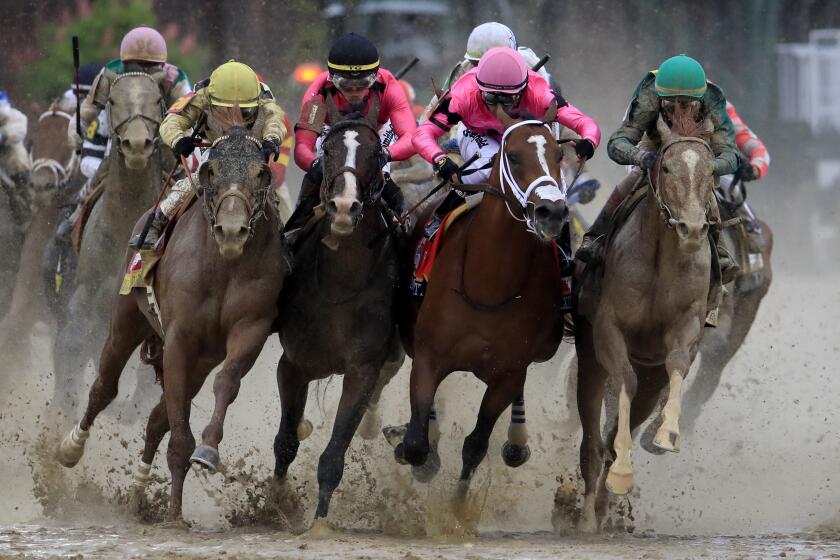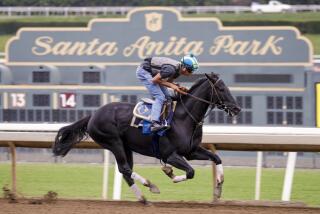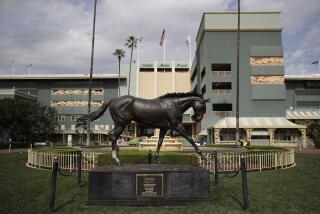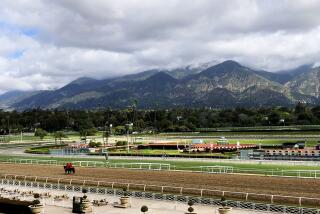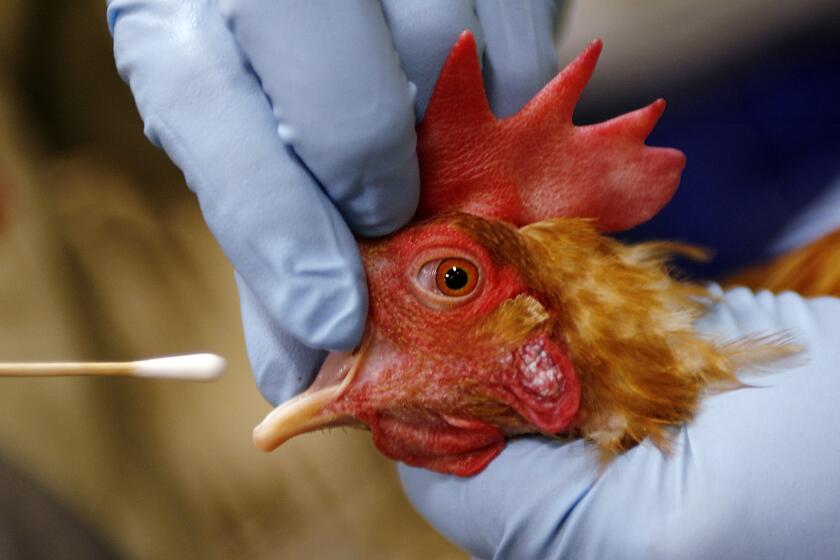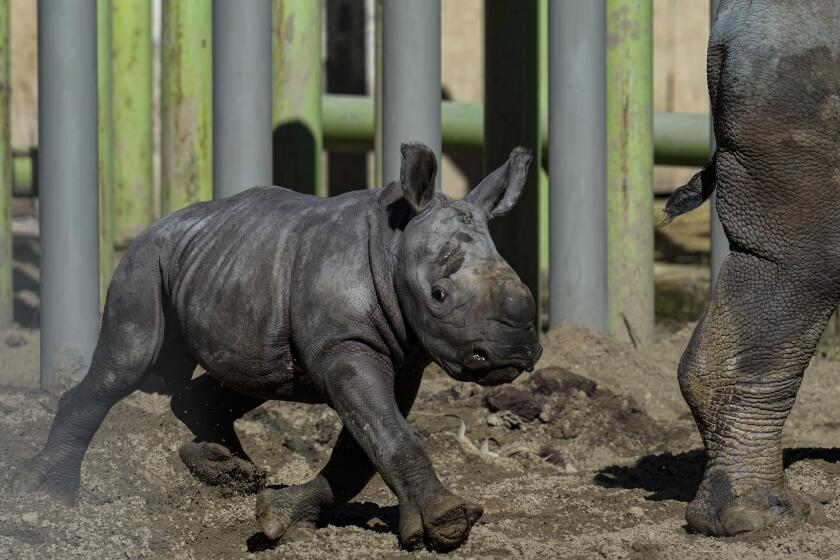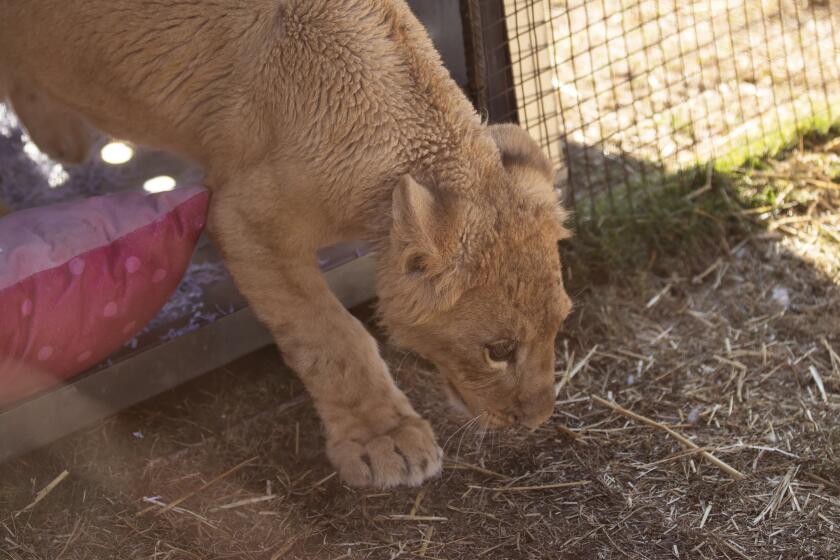Santa Anita opens and faces the most important meeting of its 85-year history
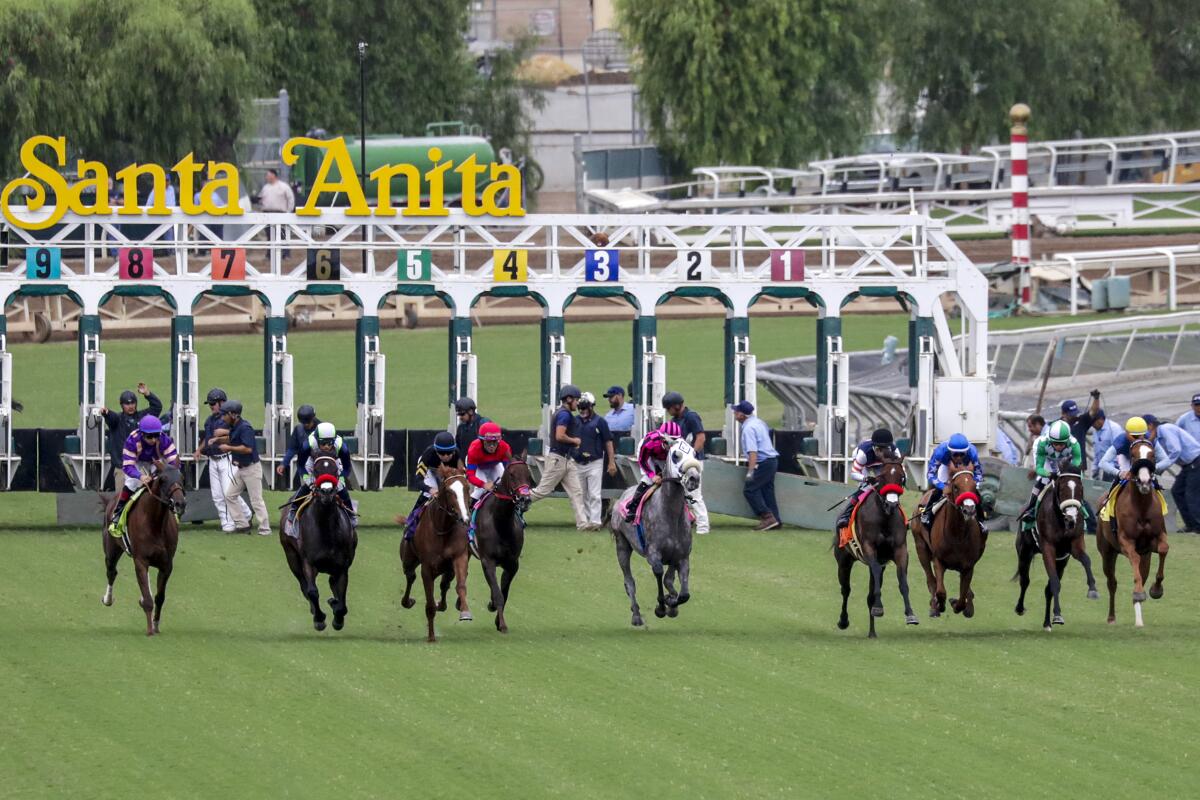
Yet again, Santa Anita is faced with the most important meeting in its 85-year history. At stake is not just the future of the track, but perhaps the sport itself, not just in California but around the country.
During the last winter-spring meeting, which traditionally starts Dec. 26 and runs for almost seven months, the track had 30 horse fatalities, even after it was closed to racing for more than three weeks while the deaths were investigated.
The casualties led to intense scrutiny and the installment of unprecedented safety measures led by the Stronach Group (TSG), the track’s owner. Earlier this month, the L.A. County District Attorney’s office concluded a nine-month investigation and found Santa Anita not guilty of any criminal wrongdoing.
In January, the California Horse Racing Board is expected to announce the results of its investigation, focusing on information drawn from the necropsies on the horses. If the results are consistent with previous catastrophic injuries, it will find at least two-thirds were caused by preexisting conditions that go undetected because of the lack of equipment or medical procedures.
TSG realigned its corporate structure and hired Craig Fravel, a former longtime Del Mar executive and chief executive of the Breeders’ Cup, as head of its racing division. He took over in early November.
The California Horse Racing Board voted to adopt a rule that restricts use of the whip in races. It is believed to be the most restrictive in North America.
“Running a track like Del Mar or the Breeders’ Cup is a fairly compact organizational structure,” Fravel said. “Moving into a company that has five race tracks is a much more far-flung operation. It’s harder to get my arms around. But there are a lot of good people, particularly at Santa Anita.”
Fravel knows the Arcadia track is his top priority and understands the task and the gravity of the situation.
“We’re in a rebuilding mode and we need to instill confidence in our customers, horsemen on track and our wagering and attending public,” Fravel said. “Our whole industry needs a new level of confidence.”
TSG is banking on safety as the catalyst to the rebuilding project. It has instituted more stringent medication and veterinary oversight protocols. And it is a proponent of eliminating the riding crop or whip. There seems little doubt the survival of the sport, especially in California, could be in jeopardy if the frequency of casualties doesn’t decrease.
Gov. Gavin Newsom and California Sen. Dianne Feinstein have been critical of racing in California and its inability to stop horses from dying on the track. Both have said if it problem doesn’t get fixed, there could be dire consequences for the industry. Animal rights’ groups have been a constant sight at tracks and CHRB meetings, mostly calling for the elimination of the sport. There is the possibility of a ballot initiative that, if passed, could eliminate racing in the state.
On a national level, there is the bipartisan Horse Racing Integrity Act, which would call for consistent medication rules throughout the country. Currently racing is controlled solely by state-run bodies. In an effort to get in front of the pressure, the major tracks and ownership groups formed the Thoroughbred Safety Coalition, which hopes to standardize safety measures across the country.
The Santa Anita meeting was supposed to start on Thursday but was delayed until Saturday for concerns about the track condition after bad weather struck Southern California. In addition, the track would have had to take major races off the turf, making for a lousy wagering experience after anticipated scratches.
“We spent a lot of time looking at the CHRB inclement weather policy,” Fravel said. “We’re not taking any chances. Sometimes you just have to make those calls.”
The CHRB has offered a discussion point to Newsom that running on sealed surfaces be banned. A sealed surface is one in which the dirt is pressed down so that the water rolls off the top rather than penetrating the surface.

It seems in contrast to the findings of the L.A. District Attorney’s task force, which did not find that the racing surface was a factor in the breakdowns, based on the opinions of surface experts. The 17-page, graph- and chart-heavy report found no contributing factors led to the breakdowns.
“I don’t think there is a contrast [of opinions],” Fravel said. “I think there are a lot of things that we have to learn about training on a sealed surface. It may not affect what went on at that time, but maybe the next time or two or three times down the road. Those are the kind of considerations that the racing industry is dealing with. While we learn the science, we’re going to err on the side of caution.”
The CHRB has mandated that Santa Anita must cancel 12 dates, at the track’s discretion, during this meeting, the implication that it doesn’t want racing on bad surfaces.
“I think it’s safe to say, if the choice is run or not run on a sealed surface that it’s not likely we’ll run,” Fravel said.
The track is expected to be in near-perfect shape, with a backdrop of the snow-topped San Gabriel Mountains, on Saturday. There are 11 races, seven of them stakes races, including three Grade 1s.
The most anticipated race is the Grade 1 $300,000 Malibu Stakes with Omaha Beach, who was the favorite for the Kentucky Derby before scratching with a throat issue. He was second in the Breeders’ Cup Mile. Also in the race is Roadster, winner of the Santa Anita Derby.
Around 9 p.m. on Sunday night, Ed Burgart will hoist his binoculars, step behind the microphone and spend around 20 seconds calling his last race as the full-time quarter-horse announcer at Los Alamitos Race Course.
Bellafina, winner of the Santa Anita Oaks and second in the Breeders’ Cup Filly and Mare Sprint, is in the Grade 1 $300,000 La Brea Stakes. And, Gift Box, winner of the Santa Anita Handicap, is in the Grade 2 $200,000 San Antonio Stakes.
Saturday’s card is filled with quality horses and good-sized fields, except the Malibu, which has five entrants. But the other challenge Santa Anita faces is a dwindling horse population in the wake of all the troubles the track has endured.
Santa Anita mainstay trainers such as Richard Baltas, Phil D’Amato, Peter Eurton, Peter Miller and John Sadler are sending some horses to Oaklawn Park in Arkansas, keeping their options open should things turn bad at Santa Anita. Jerry Hollendorfer, who was banned from TSG tracks after his fourth fatality at Santa Anita and two at Golden Gate Fields, will also run horses at Oaklawn.
“[The horse population] is down, no question,” Fravel said. “And we’re going to do the best we can to race four days a week. We’re going to write races that fit our horse population. We need to send a message to our owners and trainers that we appreciate them and want them to run and be part of our program.
“It’s all worth saving.”
More to Read
Get our high school sports newsletter
Prep Rally is devoted to the SoCal high school sports experience, bringing you scores, stories and a behind-the-scenes look at what makes prep sports so popular.
You may occasionally receive promotional content from the Los Angeles Times.
